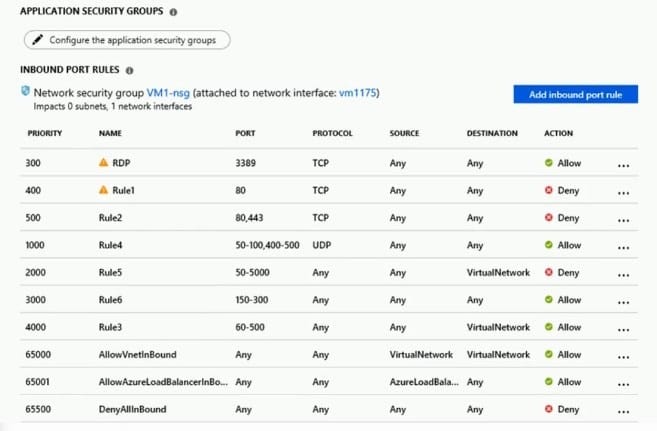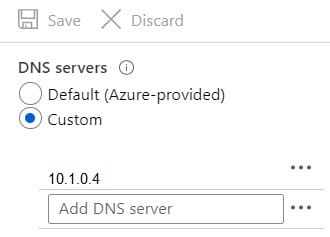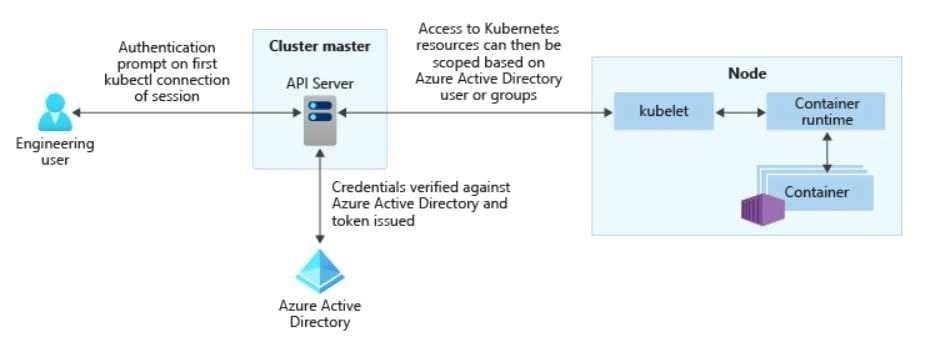Exam Details
Exam Code
:AZ-104Exam Name
:Microsoft Azure AdministratorCertification
:Microsoft CertificationsVendor
:MicrosoftTotal Questions
:361 Q&AsLast Updated
:Mar 23, 2025
Microsoft Microsoft Certifications AZ-104 Questions & Answers
-
Question 151:
Note: This question is part of a series of questions that present the same scenario. Each question in the series contains a unique solution that might meet the stated goals. Some question sets might have more than one correct solution, while
others might not have a correct solution.
After you answer a question in this section, you will NOT be able to return to it. As a result, these questions will not appear in the review screen.
You have an Azure subscription that contains the following users in an Azure Active Directory tenant named contoso.onmicrosoft.com:

User1 creates a new Azure Active Directory tenant named external.contoso.onmicrosoft.com.
You need to create new user accounts in external.contoso.onmicrosoft.com.
Solution: You instruct User4 to create the user accounts.
Does that meet the goal?
A. yes
B. No
-
Question 152:
You have an Azure subscription that contains an Azure Active Directory (Azure AD) tenant named contoso.com and an Azure Kubernetes Service (AKS) cluster named AKS1.
An administrator reports that she is unable to grant access to AKS1 to the users in contoso.com.
You need to ensure that access to AKS1 can be granted to the contoso.com users.
What should you do first?
A. From contoso.com, modify the Organization relationships settings.
B. From contoso.com, create an OAuth 2.0 authorization endpoint.
C. Recreate AKS1.
D. From AKS1, create a namespace.
-
Question 153:
You have an Active Directory domain named contoso.com that contains the objects shown in the following table.

The groups have the memberships shown in the following table.

OU1 and OU2 are synced to Azure Active Directory (Azure AD).
You modify the synchronization settings and remove OU1 from synchronization. You sync Active Directory and Azure AD.
Which objects are in Azure AD?
OU1 and OU2 are synced to Azure Active Directory (Azure AD). You modify the synchronization settings and remove OU1 from synchronization. You sync Active Directory and Azure AD.
Which objects are in Azure AD?
A. User4 and Group2 only
B. User2, Group1, User4, and Group2 only
C. User1, User2, Group1, User4, and Group2 only
D. User1, User2, User3, User4, Group1, and Group2
-
Question 154:
You have an Azure subscription that contains an Azure Active Directory (Azure AD) tenant named adatum.com. The tenant contains 500 user accounts.
You deploy Microsoft Office 365. You configure Office 365 to use the user accounts in adatum.com.
You configure 60 users to connect to mailboxes in Microsoft Exchange Online.
You need to ensure that the 60 users use Azure Multi-Factor Authentication (MFA) to connect to the Exchange Online mailboxes. The solution must only affect connections to the Exchange Online mailboxes.
What should you do?
A. From the multi-factor authentication page, configure the Multi-Factor Auth status for each user
B. From Azure Active Directory admin center, create a conditional access policy
C. From the multi-factor authentication page, modify the verification options
D. From the Azure Active Directory admin center, configure an authentication method
-
Question 155:
You have an Azure virtual machine named VM1.
The network interface for VM1 is configured as shown in the exhibit. (Click the Exhibit tab.)

You deploy a web server on VM1, and then create a secure website that is accessible by using the HTTPS protocol VM1 is used as a web server only.
You need to ensure that users can connect to the website from the Internet.
What should you do?
A. Change the priority of Rule3 to 450.
B. Change the priority of Rule6 to 100
C. DeleteRule1.
D. Create a new inbound rule that allows TCP protocol 443 and configure the protocol to have a priority of 501.
E. For Rule5, change the Action to Allow and change the priority to 401
-
Question 156:
Note: This question is part of a series of questions that present the same scenario. Each question in the series contains a unique solution that might meet the stated goals. Some question sets might have more than one correct solution, while others might not have a correct solution.
After you answer a question in this section, you will NOT be able to return to it. As a result, these questions will not appear in the review screen.
You have an Azure subscription that contains the following resources:
1.
A virtual network that has a subnet named Subnet1
2.
Two network security groups (NSGs) named NSG-VM1 and NSG-Subnet1
3.
A virtual machine named VM1 that has the required Windows Server configurations to allow Remote Desktop connections
NSG-Subnet1 has the default inbound security rules only.
NSG-VM1 has the default inbound security rules and the following custom inbound security rule:
1.
Priority: 100
2.
Source: Any
3.
Source port range: *
4.
Destination: *
5.
Destination port range: 3389
6.
Protocol: UDP
7.
Action: Allow
VM1 has a public IP address and is connected to Subnet1. NSG-VM1 is associated to the network interface of VM1. NSG-Subnet1 is associated to Subnet1.
You need to be able to establish Remote Desktop connections from the internet to VM1.
Solution: You add an inbound security rule to NSG-Subnet1 that allows connections from the internet source to the VirtualNetwork destination for port range 3389 and uses the UDP protocol.
Does this meet the goal?
A. Yes
B. No
-
Question 157:
Your on-premises network contains an Active Directory domain named adatum.com that is synced to Azure Active Directory (Azure AD). Password writeback is disabled. In adatum.com, you create the users shown in the following table.

Which users must sign in from a computer joined to adatum.com?
A. User2 only
B. User1 and User3 only
C. User1, User2, and User3
D. User2 and User3 only
E. User1 only
-
Question 158:
You have the Azure virtual machines shown in the following table.

A DNS service is installed on VM1.
You configure the DNS servers settings for each virtual network as shown in the following exhibit.

You need to ensure that all the virtual machines can resolve DNS names by using the DNS service on VM1. What should you do?
A. Configure a conditional forwarder on VM1
B. Add service endpoints on VNET1
C. Add service endpoints on VNET2 and VNET3
D. Configure peering between VNET1, VNET2, and VNET3
-
Question 159:
Note: This question is part of a series of questions that present the same scenario. Each question in the series contains a unique solution that might meet the stated goals. Some question sets might have more than one correct solution, while
others might not have a correct solution.
After you answer a question in this section, you will NOT be able to return to it. As a result, these questions will not appear in the review screen.
You have an Azure subscription that contains the following users in an Azure Active Directory tenant named contoso.onmicrosoft.com:

User1 creates a new Azure Active Directory tenant named external.contoso.onmicrosoft.com.
You need to create new user accounts in external.contoso.onmicrosoft.com.
Solution: You instruct User1 to create the user accounts.
Does that meet the goal?
A. Yes
B. No
-
Question 160:
Note: This question is part of a series of questions that present the same scenario. Each question in the series contains a unique solution that might meet the stated goals. Some question sets might have more than one correct solution, while
others might not have a correct solution.
After you answer a question in this section, you will NOT be able to return to it. As a result, these questions will not appear in the review screen.
You have an Azure subscription that contains the following users in an Azure Active Directory tenant named contoso.onmicrosoft.com:

User1 creates a new Azure Active Directory tenant named external.contoso.onmicrosoft.com.
You need to create new user accounts in external.contoso.onmicrosoft.com.
Solution: You instruct User3 to create the user accounts.
Does that meet the goal?
A. Yes
B. No
Related Exams:
62-193
Technology Literacy for Educators70-243
Administering and Deploying System Center 2012 Configuration Manager70-355
Universal Windows Platform – App Data, Services, and Coding Patterns77-420
Excel 201377-427
Excel 2013 Expert Part One77-725
Word 2016 Core Document Creation, Collaboration and Communication77-726
Word 2016 Expert Creating Documents for Effective Communication77-727
Excel 2016 Core Data Analysis, Manipulation, and Presentation77-728
Excel 2016 Expert: Interpreting Data for Insights77-731
Outlook 2016 Core Communication, Collaboration and Email Skills
Tips on How to Prepare for the Exams
Nowadays, the certification exams become more and more important and required by more and more enterprises when applying for a job. But how to prepare for the exam effectively? How to prepare for the exam in a short time with less efforts? How to get a ideal result and how to find the most reliable resources? Here on Vcedump.com, you will find all the answers. Vcedump.com provide not only Microsoft exam questions, answers and explanations but also complete assistance on your exam preparation and certification application. If you are confused on your AZ-104 exam preparations and Microsoft certification application, do not hesitate to visit our Vcedump.com to find your solutions here.
